Tom's Guide Verdict
The Ring Solar Pathlight is the smartest way to illuminate your walk, but it’ll cost you.
Pros
- +
Nice design
- +
Built-in motion sensors
- +
Lots of app settings
- +
Can be linked to other Ring products
Cons
- -
Pricey
Why you can trust Tom's Guide
Size: 16.8 in x 4.33 in x 4.33 inches
Light: Up to 80 lumens
Motion detection: 120º field of view, 15-foot range
Weather resistance: -4°F to 122°F, IP66
The walkway leading up to my house has a series of path lights that never worked well — they’re kind of beat up, a few are falling down, their lights are always burning out, and they never seem to turn on and off at the right time. And, they have to be plugged in to work.
Out of apathy, I’ve put off replacing them, but after testing the Ring Solar Pathlights, I think I’m finally ready to rip my old path lights out of the ground. Not only do Ring’s lights not have to be plugged in, but they’re brighter and have motion detectors to let me know when someone is approaching. They’re not cheap, but as my Ring Solar Pathlights review found, these are some of the best smart lights for your outdoors.
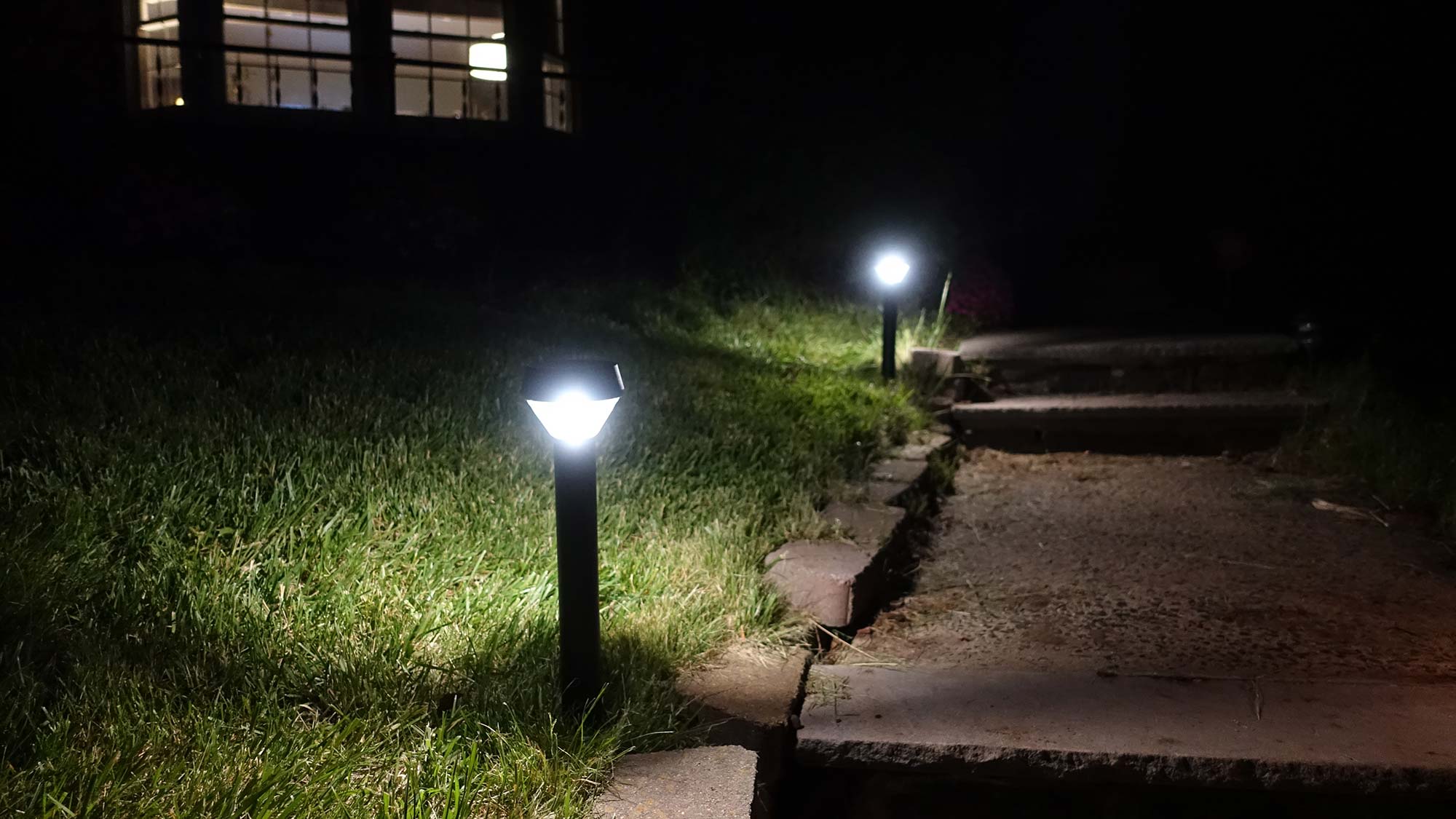
Ring Solar Pathlights: Design
Standing nearly 17 inches tall, and with a 4.3-inch diameter head, the Ring Solar Pathlights are definitely noticeable when staked in your lawn.
The top of the lights features a small solar panel; further down is a clear plastic section that houses the LED, and tapers to the shaft. With the exception of the light area, the entire device is black; no other color options are available.
Ring Solar Pathlights review: Price and availability
Compared to non-smart pathway lighting, the Ring Solar Pathlights aren’t cheap. An individual Ring Solar Pathlight costs $35, but in order to use them, you’ll also need a bridge ($50) that links the lights to your home Wi-Fi network. By comparison, the top-selling solar pathway lights on Amazon cost $28—for a pack of 12.
Ring sells a pack with two lights and the bridge for $90, while a 4-pack of lights and a bridge costs $160. You can connect up to 50 lights to a single bridge, so unless you’re planning to make your driveway look like an airport runway, one should suffice.
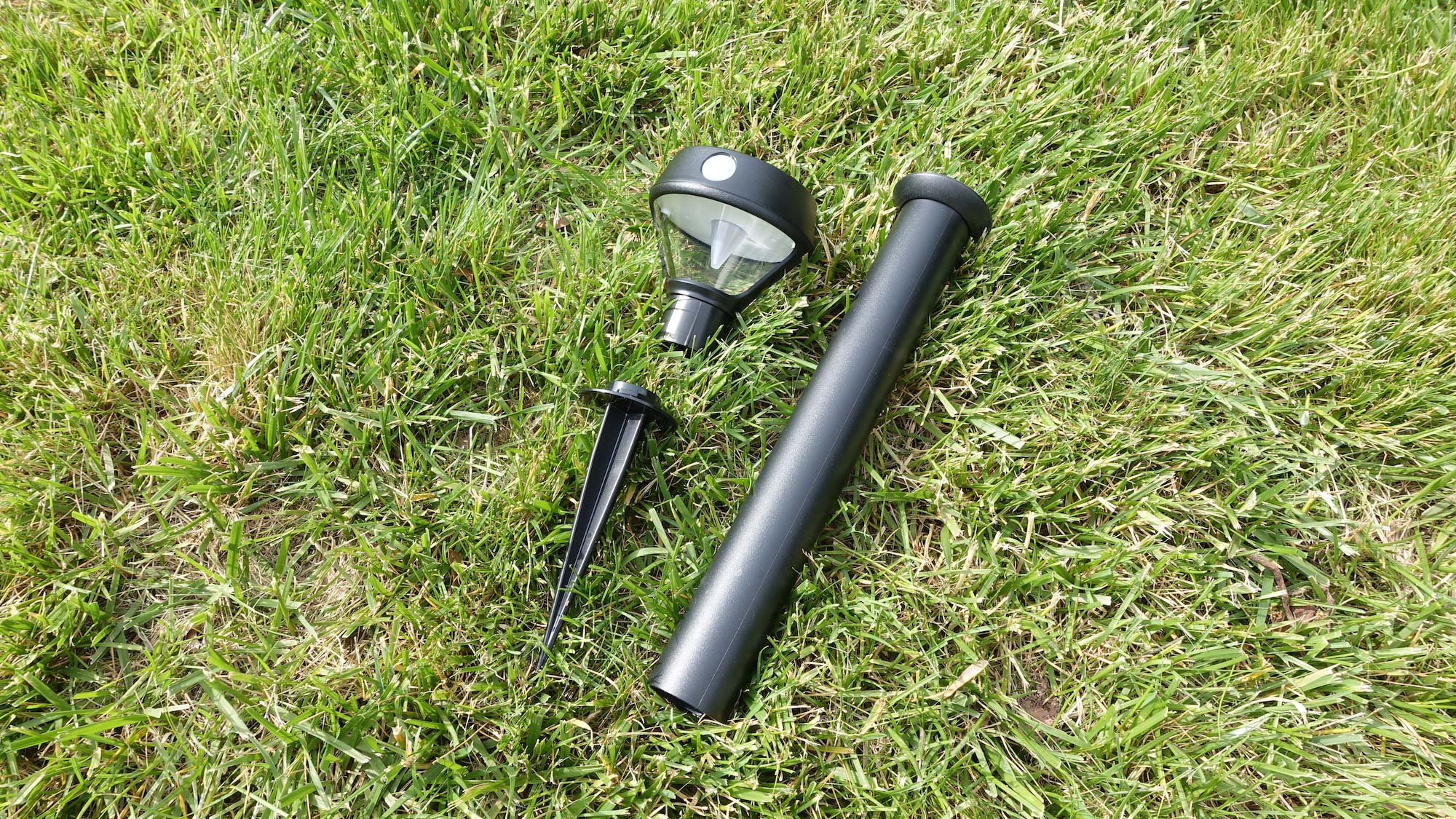
Ring Solar Pathlights review: Installation and performance
The Ring Solar Pathlights come in a few pieces, but connecting the parts together takes no more than a few seconds. However, you also have to plug in the Ring Bridge to an outlet inside your house, preferably somewhat near the lights. After that, it’s just a matter of registering everything in the Ring app, which is available for Android and iOS.
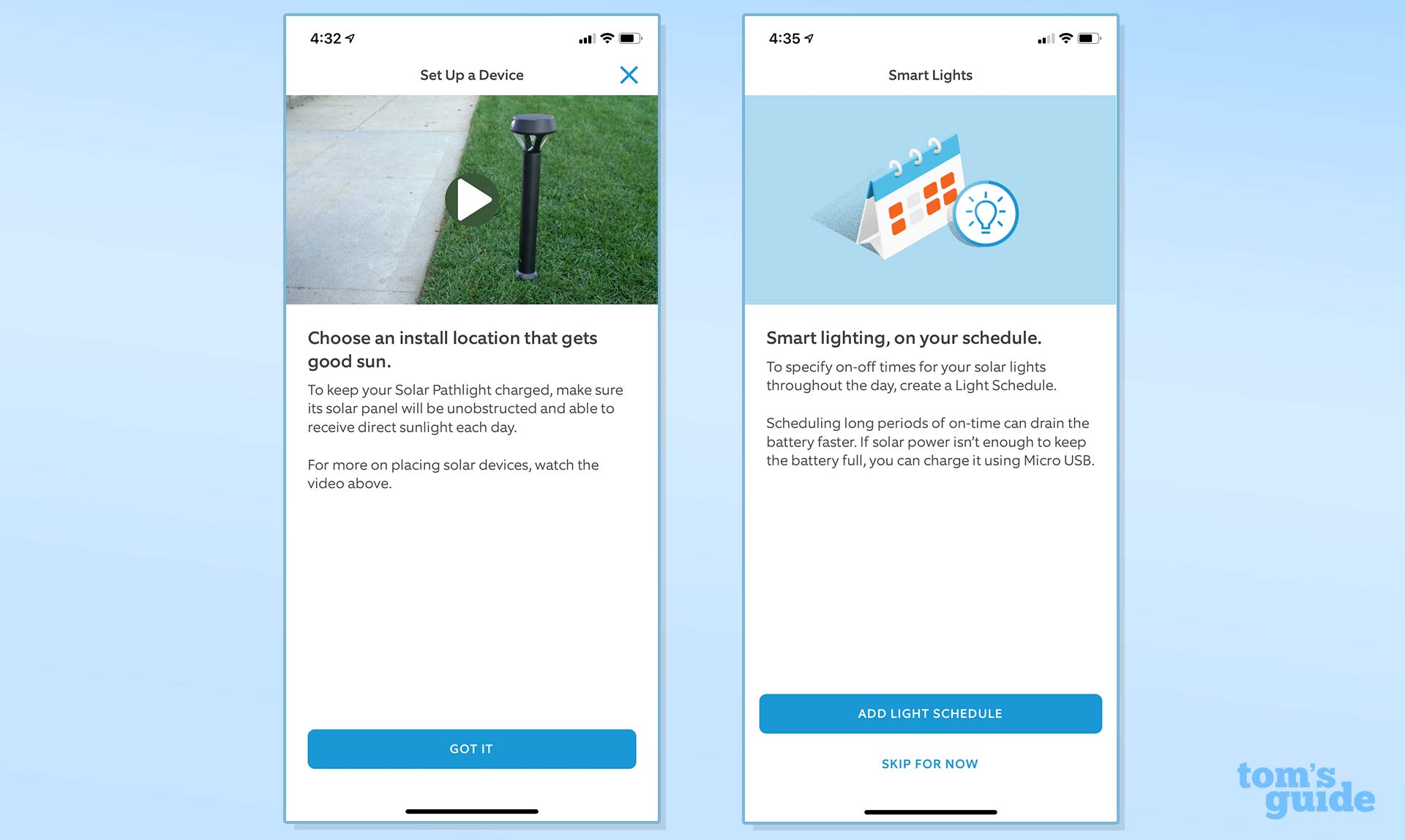
That’s the easy part. After that, the Ring app offers a ton of settings for the Pathlights for you to configure. You can toggle the lights and motion detection on and off. There’s also a setting to tell the lights not to turn on if it’s bright outside, and a slider so you can adjust the brightness threshold. You can adjust the sensitivity of the motion sensors, create a schedule for when the lights should turn on and off, group lights together, and more. I probably spent three times as much time fiddling with the settings in the app as I did actually installing the lights in my yard.
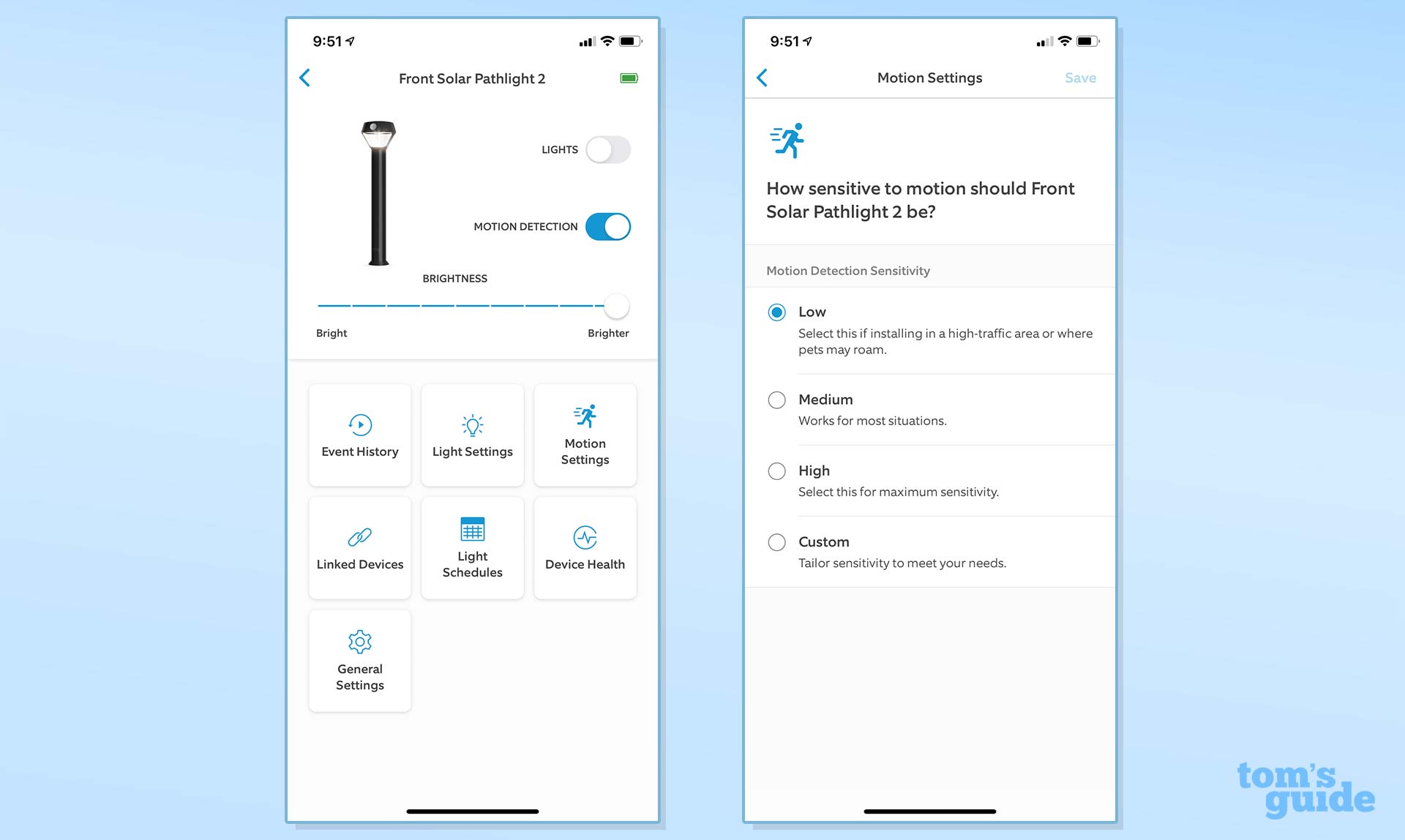
Once everything was up and running, the Solar Pathlights performed well; they turned on when I wanted them to, and turned off at the scheduled time. I especially liked a feature tied to their motion sensors: You can set the lights to remain on at a lower brightness, but switch to full brightness when motion is detected. And, if you group lights together, you can have them all increase brightness when just one of them senses movement.
Ring Solar Pathlights review: Smart home compatibility
As Ring’s main trade is in video doorbells and home security cameras, it stands to reason that its smart lights would work with its main business line. Ring’s Solar Pathlights do just that. Within the Ring app, you can link the Pathlights to, say, a Ring Video Doorbell so that when the lights detect motion, they can tell the video doorbell to automatically start recording.
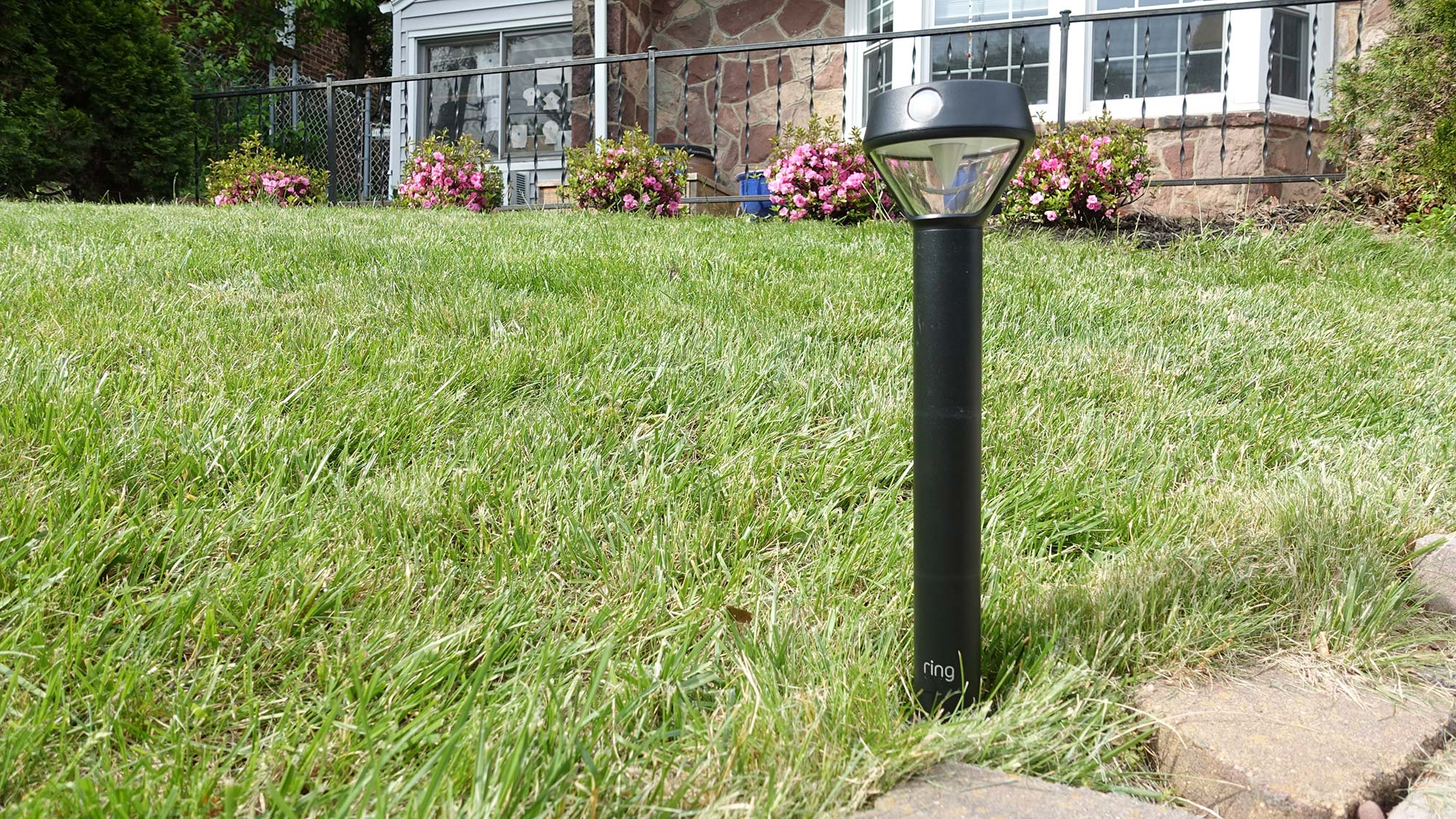
It’s a clever feature, especially for those who don’t have the benefit of the Pre-Roll feature in the Ring Video Doorbell 3 Plus and the Ring Video Doorbell Pro. I found that this feature worked very well in my testing; I even had to dial back the Pathlights’ motion sensitivity, as I would get a recording every time a car drove past.
Ring Solar Pathlights review: Verdict
Ring’s Solar Pathlights are in a class of their own. While they are more expensive than the rest of the best solar lights on our list, they’re worth the investment, especially for someone who already has other Ring products.
There’s also nothing else really like them in the market. The Mr. Beams Outdoor Battery-powered Pathlights ($30 for a pack of two) have motion sensors that activate when someone comes within 12 feet, but otherwise, they lack any “smarts.” Philips Hue makes a few smart pathlights, but these each cost more than $100 apiece, must be plugged in, and lack motion sensors.
So, while the Ring Solar Pathlights are very task-specific, they perform their job well, and are a great complement to the Ring ecosystem.

Michael A. Prospero is the U.S. Editor-in-Chief for Tom’s Guide. He oversees all evergreen content and oversees the Homes, Smart Home, and Fitness/Wearables categories for the site. In his spare time, he also tests out the latest drones, electric scooters, and smart home gadgets, such as video doorbells. Before his tenure at Tom's Guide, he was the Reviews Editor for Laptop Magazine, a reporter at Fast Company, the Times of Trenton, and, many eons back, an intern at George magazine. He received his undergraduate degree from Boston College, where he worked on the campus newspaper The Heights, and then attended the Columbia University school of Journalism. When he’s not testing out the latest running watch, electric scooter, or skiing or training for a marathon, he’s probably using the latest sous vide machine, smoker, or pizza oven, to the delight — or chagrin — of his family.

